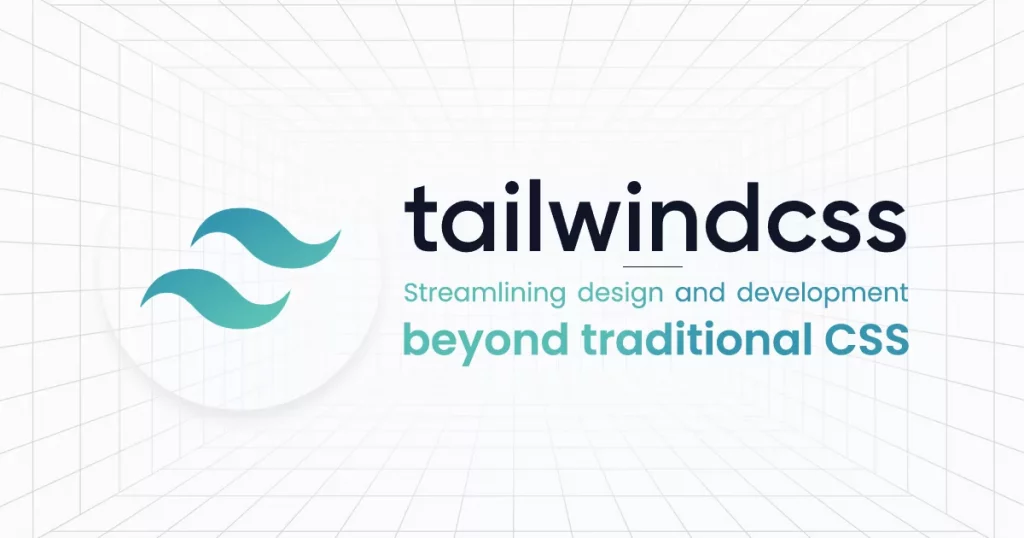Tailwind: Streamlining Design and Development beyond traditional CSS

As a hub of technology, we are helping businesses enhance their technical prowess and become digitally transformed to tackle the issues of today and tomorrow.
We have always been in the driver’s seat when it comes to working with the latest and updated technologies that further enable us to excel in our IT projects and manage deliverables for our clients.
In the dynamic world of modern web development, the importance of creating interactive and intuitive websites is a factor in distinguishing a business and achieving unparalleled success.
We have adopted Tailwind CSS to streamline and enhance our web development operations and have begun implementing it at Sarvika Tech.
It is a utility-first CSS framework that allows us to build modern and responsive user interfaces efficiently and useful for projects that either lack a design system or have a plain vanilla design system.
Tailwind is also ideal for front-end teams with little CSS expertise or limited resources allocated to CSS architecture. In this article, we will cover the prowess of Tailwind CSS, which our designers have experienced by using it in multiple of our projects.
Why Tailwind CSS is Perfect for Front-End Teams
-
Achieving Rapid Development
Tailwind has a set of predefined utility classes that offer an extensive range of styling options. It lets designers apply styles directly in the HTML markup, eliminating the need for writing extensive custom CSS.
It also lets them experiment with different styles and accelerate the development cycle through faster prototyping and quicker iterations.
-
Consistency in Design
Recognizable and successful brands in any industry are known for being consistent with their designs, making them memorable in the eyes of their customers.
Tailwind enforces a uniform design system in which, by using the same set of utility classes, the designers can achieve consistency in design standards which are aligned with the business objectives.
-
Responsive Design
As we talk about the importance of consistency above, it’s also crucial to look good on every screen and device.
Tailwind facilitates the creation of a responsive design that ensures designers can achieve a standard look and experience for users with various devices and screen sizes.
-
Customization
It offers customization that further enables us to tailor the framework to the specific needs of businesses.
The extension and modification of utility classes make it possible to adapt the framework as per the organisation’s branding guidelines
-
Maintenance and Refactoring
The utility-first approach offered by Tailwind makes maintaining and refactoring styles simple. It can locate and modify styles through the utility classes, which can be further updated in the codebase.
-
Community Support
Tailwind has a vibrant community that keeps on informing about the best practices, updates, and solutions to challenges through documentation, tutorials, and community discussions. It also ensures that our usage of Tailwind remains current and aligned with industry standards.
The limits of Tailwind CSS
Like any other technology, Tailwind has its drawbacks which should be known before implementation it in any project. For our readers, we believe in creating a complete learning experience so that they can make smart decisions after understanding the pros and cons of any technology.
-
Projects Seeking Custom Designs
Due to the utility-first approach of Tailwind, there may be a limit to the extent of custom designs. In case you possess projects that require a high level of intricate design, a traditional CSS framework will be a better solution.
-
Teams Resistant to Utility-First Approach
In organizations that are not familiar with or resistant to the utility-first approach, introducing Tailwind will not be considered a wise move. The better approach will be sticking with the CSS methodology where your team is comfortable with getting better outcomes.
-
Performance Concerns
Although Tailwind’s utility-first approach can deliver optimized stylesheets, including the entire framework might result in a larger CSS file than needed for small projects. If performance is a critical concern, a more minimalistic CSS approach may be preferable.
-
Projects with Stringent Accessibility Requirements
Tailwind encourages rapid development with utility classes, but ensuring optimal accessibility may require additional effort.
If your project has stringent accessibility requirements, and you find that the utility-first approach makes it challenging to achieve and maintain accessibility standards, an alternative approach may be considered.
-
Projects Having Existing CSS Frameworks
If your project already relies heavily on another CSS framework that aligns with your needs, introducing Tailwind might lead to conflicts or unnecessary redundancy. In such cases, it’s essential to evaluate whether the benefits of Tailwind outweigh potential integration challenges.
Conclusion
Tailwind has undoubtedly enhanced our efficiency and design capabilities, a thoughtful approach ensures its benefits are maximized in contexts where its strengths align with project needs. The decision to adopt Tailwind CSS should be informed by a careful evaluation of project requirements, team dynamics, and specific use cases.






 Branded Solutions
Branded Solutions






















